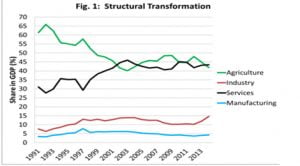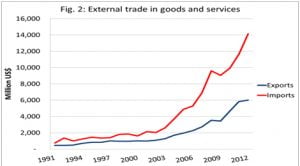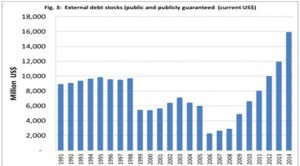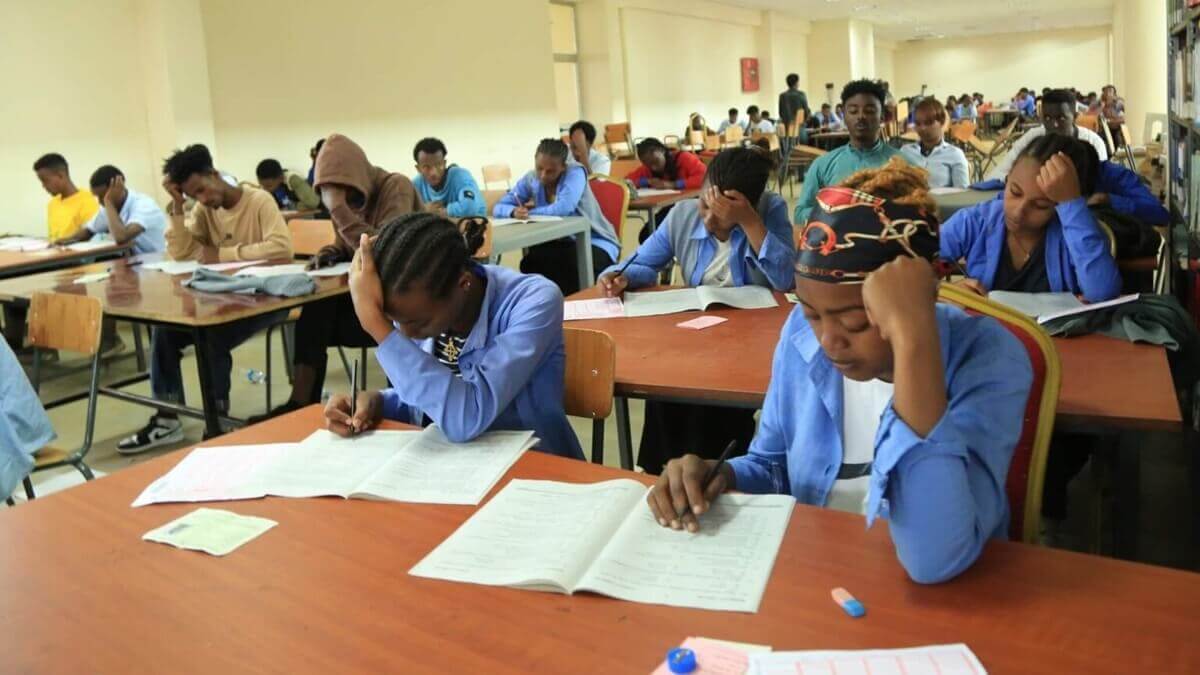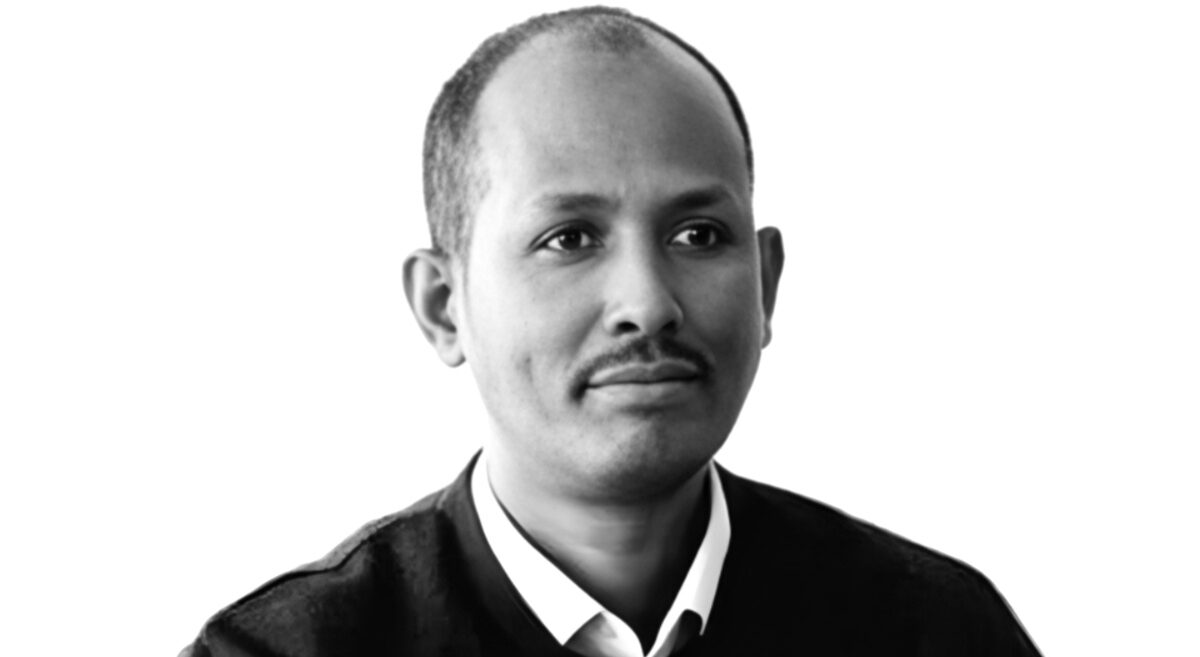Ethiopia’s ‘miraculous’ economic growth: Dancing while standing still
Economic Commentary
By J. Bonsa, (PhD), special to Addis Standard
The 25th episode of “Ginbot 20” was on show in Addis Abeba on May 28th. This is a melodramatic event, an anniversary of the 28th May 1991 when the EPRDF rebel forces ousted the Military regime. Ethiopians have much to celebrate as far as the demise of the Derge regime was concerned. Perhaps this is the only element that unites public opinion toward this anniversary.
But May28th is celebrated with a mixed feeling. For some it is a “victory day”, a military success, a day to remember the lives lost during the civil war, and the dawn of Ethiopia’s renaissance. For others, it is a day when all hopes and promises brought about by that victory day have already been shattered one by one; a day that left Ethiopia under the iron fist of a group no less dictatorial than the regime they deposed. Such rare admissions are beginning to be heard even from among critics within the EPRDF inner circles.
In order to seek legitimacy, it has been customary for EPRDF to engage the general public by propaganda campaign, often contrasting their achievements in socio-economic progresses with those under their predecessor. At a press briefing he gave to state media on the eve of May 28, Prime Minister Hailemariam Desalegn claimed, once again, that the economic policy and the multi-party system introduced by the current regime has brought about tremendous socio-economic progress. He stressed specifically that Ethiopia’s agriculture has been “growing at all levels and market oriented farmers were created and these are vital for the advancement of the economic policy of the country”.
In this piece, I will focus on Ethiopia’s economic success story and examine its validity. I will then highlight broader claims related to multi-party system. Unless stated differently, most data and charts presented in the subsequent sections are taken from the World Bank Development Indicators database.
GDP growth rate
The jury is still out on the credibility of Ethiopia’s double digit GDP growth rate. On the one hand, government official data have presented double digit growth for more than a decade. The official version has often been reflected in flagship reports regularly published by the multilateral agencies such as the World Bank and the IMF.
On the other hand, analysts have utilized credible empirical evidences to raise serious questions about the validity of the official data. For instance, in its March 2nd 2012 issue, the Economist warned that Ethiopia’s GDP growth figures cannot be taken seriously:
“Just how sustainable is Ethiopia’s advance out of poverty? This is a vexed topic among bankers and others in Ethiopia who hold large wads of birr, the oft devalued currency. Despite hard work by the World Bank, oversight from the International Monetary Fund, and studies by economists from donor countries, it is not clear how factual Ethiopia’s economic data are. Life is intolerably expensive for Ethiopians in [Addis Abeba], the capital, and its outlying towns. Some think Ethiopia’s inflation figures are fiddled with even more than those in Argentina. Even if the data are deemed usable, the double-digit growth rates predicted by the government of Prime Minister Meles Zenawi look fanciful.”
In another piece, published on London School of Economics blog, I have provided compelling empirical evidences to suggest that at least agricultural GDP was substantially inflated. The best way to confirm whether or not the growth figures were factual is to triangulate it by examining other economic variables closely related to it. Now let us shift our attention from growth rate based discussion and anchor the policy debate on change in the size of the economy during the post 1991 period.
GDP per capita
It proves useful to begin by examining changes in GDP per capita since it combines changes in the sizes of two variables – economic and demographic.
Real GDP per capita changed from $129 in 1991 to $315 in 2014. “Real” because the influence of inflation is filtered out. Thus, if Ethiopia’s GDP was equally divided among all citizens, then income of every Ethiopian would have more than doubled between 1991 and 2014. I will return to the likelihood of equitable distribution.
But is the doubling of income per person such a big deal, given what we know about Ethiopia’s potential growth? Here I am not talking about abundant national resource endowments. The analysis here is confined to opportunities offered by the exceptionally high rates of capital inflows, the official development assistance and aid (ODA).
Ethiopia received $1.7 and $3.5 billion respectively in 1991 and 2014. The cumulative total inflow was $53.6 billion. Real GDP in 2014 was only $30.6 billion, that is less than two-third of the total ODA. In other words, Ethiopia’s GDP is only a fraction of the amount of its cumulative ODA.
A dollar injected into any economy would have a multiplier effect, that is to say “the capacity of new money to initiate chain reactions – generate jobs and hence income as it keep circulating in the economy”. There is a ripple effect emanating from it, like a piece of stone thrown onto a still water, causing a motion in some predicable way in all directions. The size of the multiplier would depend on productive utilization.
The World Bank estimates the sizes of such multipliers to range between two and five. Hence, the $53.6 billion should have generated between $107 billion and $268 billion. The sum of Ethiopia’s GDP over the entire period comes to about $320 billion. We normally expect ODA to constitute a small fraction of the size of an economy. Above all, ODA is meant to boost GDP, not to replace it. Clearly, there is something seriously bizarre about the way ODA has been utilized in Ethiopia. GDP does not rise even proportionately with ODA, let alone in multiple of it.
In order to put matters in perspective, I would draw a parallel with South Korea which is known for using ODA for recovery from the Korean War as well as to propel itself onto a sustainable growth path. It is estimated that the total amount of ODA [South] Korea received from foreign countries was US$12 billion. As economic policies took effect, however, the dependence on foreign grant assistance lessened. In less than ten years, South Korea’s economy grew so rapidly that the United States decided to phase out its aid program to Seoul. Starting from late 1980s, South Korea graduated from recipient to donor status.
This means South Korea achieved so much with less than a fourth of the ODA Ethiopia received. In a nutshell, the size of Ethiopia’s GDP (and GDP per capita) should have expanded by a multiple of what has been reported, as miraculous achievement at that!
Structural transformation
The livelihood of about 85% of Ethiopia’s population is supported by agriculture. Economic development in such countries is accompanied with two concurrent changes: the size of GDP, and the composition of GDP. The latter means the structure of the economy changes from predominantly traditional, rural and agricultural to modern, urban and industrial. This is what is called structural transformation. The art of devising sound economic development policy lies in balancing these two changes, without necessarily putting one ahead of the other.
EPRDF initially indicated a policy commitment to give priority to the Agricultural sector, when “Ethiopia had formally adopted Agriculture Development Led Industrialization (ADLI) as its development strategy in 1994”. Through ADLI, agriculture was supposed to pave the way for industrialization.
However, enabling agricultural policy instruments such as fertilizer subsidy were withdrawn just three years into the launch of ADLI. Government affiliated companies used “strong-handed promotion of the credit-fertilizer packages… [A]gricultural output continued to fall behind population growth.” Agricultural Extension and credit-fertilizer have been extensively used “as a means of control over smallholder producers”.
This culminated onto yet another bold program called the Growth and Transformation Program (GTP). This involved major departure from the previous policy commitment to small holder agricultural development. Small holder supports have largely become an exercise in trivia e.g. teaching farmers how to sow teff in rows! Horticulture and large scale farming have got precedence over small holder farming. However, large scale farming caused incalculable damages to the livelihoods of farming households who are evicted from their ancestral lands.
The above chart (Fig.1) displays a litmus test of Ethiopia’s economic success story. I plotted the share of various economic sectors in aggregate GDP (1991-2014). Clearly, the relative shares of the industrial sector and manufacturing subsector are both stuck at around 10% and 4% marks respectively. Each barely moved from where it was in 1991!
Agriculture’s share was about 60% in 1991 but it dropped to around 40% in 2014. The initial share of services was about 30% in 1991 but now it increased to 40%. The sharply contrasting shapes of the lines give the impression that the service sector expands almost exclusively at the expense of the agricultural sector. Since almost nothing happened to the share of the industrial sector, it follows that any transformation that has occurred is only between agriculture and services. De-industrializing advanced economies can afford to specialize in services, but certainly this should not apply to a traditional economy.
The external sector
The preceding sections have focused on the structure and performance of the domestic economy. Now I proceed to examining how sectoral policy bias in the domestic economy has adversely affected the external sector. Rhetoric aside, EPRDF has never favored commodity producing sectors, that is why agriculture shrank and industry stagnated.
However, the construction and service sectors have grown considerably as a direct consequence of favorable policy toward them. This is a cocktail of catastrophic policy blunder – promoting non-tradable services (non-exportables) and discriminating against tradable commodities (or exportables). Critically, the sectoral policy bias is inevitable outcome of regional development policy bias, for instance, against the now decaying coffee growing regions such as Jimma.
Fig. 2 displays the outcome of these policy blunders. It shows an ever widening gap between earnings from exports and payments for imports. In 1991, the external sector gap was only $305 million, but it rose to $8.1 billion, a gigantic 27 fold increase. The balance of payment deficit has been growing every year by more than the initial amount. So, the regime has nothing to celebrate as achievements in export promotion.
In addition to generous ODA, Ethiopia has received exceptional treatment in debt cancellations. These assistances and grants should have helped close the external sector gap displayed in Fig. 2. One would not expect a piling up of external debt stocks. The fact is Ethiopia’s debt is hitting the roof, as shown in Fig. 3. It is incomprehensible why this happens. In 1991, the Derge regime left behind a debt stock of $8.8 billion. It was thought such a high debt pile was scandalous. The matter seems to have gotten from bad to worse under the EPRDF regime. Now the size of debt stock has doubled, currently standing at $16 billion. This constitutes 31% of GDP (both in current prices).
Income distribution
At this juncture, it is appropriate to refer back to the nearly two and a half fold real increase in GDP per capita. I have provided tangible evidence to suggest that Ethiopia’s GDP could have increased by a substantially greater magnitude if internal and external resources were utilized effectively and efficiently. Be that as it may, it is essential to know to what extent all Ethiopians have experienced fairly balanced and equitable changes in their incomes.
Income distribution has been the least studied aspect of the Ethiopian economy. Of course, there is abundant literature on poverty metrics. But they often rely on household survey data which are conducted under the auspices of government officials. Results from a few thousand persons are, more often than not, hastily generalized to arrive at “amazing and almost miraculous sounding conclusions”. For instance, IMF’s recent report on Ethiopia concluded: “Unlike other rapidly growing economies, the country has not experienced a significant increase in inequality, as measured by the Gini coefficient, even as poverty reduction occurred at a rapid pace”.
However, given what Ethiopians know about their country’s situation, it is mind boggling to read such statements from a reputable multilateral agency. In any event, it is not a difficult task to triangulate the issues and establish some balance in the argument. A report compiled by the World Bank in 2005 states that “real wages in Oromia declined by 36% followed by Amhara (31%).” This refers to wages of civil servants.
EPRDF has an explicit policy to keep wages low in all sectors, public or private, in order to attract foreign investment. For instance, in a recent interview, PM Hailemariam reiterated that “to achieve our advantage in light manufacturing, we have kept such costs low. This … starts with government wages. If you make government wages large, it impacts and inflates the market.” Perhaps it is fair to say that inflation is the only economic variable that has been persistently growing in double digits in Ethiopia. Now given that the government has such an explicit policy to keep nominal wages low, how can real wage even stagnate or stay at the same level, let alone grow?
The civil servants and other fixed income groups, although their livelihoods have stagnated or worsened due to the wage policy, are actually in a relatively better off positions compared to the 85% of rural farming households. The declining wage of the civil servants supports not just the employee and his/her immediate families in cities but also their extended families often residing in rural areas. The fact that rural farming households depend on their salaried relatives living in cities confirms that actually their income and hence livelihoods are in a worse situation compared to those of their relatives earning fixed income.
This in turn tells us that the lion’s share of the cake, per capita GDP whose size more than doubled, must have gone to a tiny section of the population who depend neither on farming nor on wage income. After all, it is reported that “Ethiopia is creating millionaires at a faster rate than any other country on the continent.”
Fallacy of composition
Economic policy discussion on Ethiopia’s success story is becoming a philosophical debate in a fallacy of composition. To begin with, for proponents of the EPRDF regime whether or not the success story does actually exist is proving to hinge more on faith than evidence. Although I have not covered it in this piece, the contradictions in Ethiopia’s political economy start with the governance system. In addition to “achievements in economic progress”, PM Hailemariam stated that EPRDF established a multi-party system as well as “a government structure which accommodates diversity and entertains the rights of nations and nationalities”. In fact nothing could be further from the truth.
NPR journalist, Gregory Warner, paraphrased the late PM Meles Zenawi’s speech in 2005 and stated that EPRDF waits until the opposition assemble and grow legs, that is establish leaders and constituency. They then cut off those legs and make the head (the leader) float on air with no root to give semblance of multiparty democracy in the country. Continue the same vicious policy over and over until the opposition is fully dismantled. It is by using such diabolically smart tactics that EPRDF “wins” elections. In fact, it is nonsensical to talk about multi-party democracy existing in Ethiopia.
Some overzealous reporters have hailed Ethiopia as “African Lion”, presumably to draw a parallel with Asian Tigers. However, one can only draw an analogy with a sick lion which cannot hunt and kill to feed itself, and always on a lookout to scavenge for leftover from other carnivore.
EPRDF officials and some gullible foreign analysts are seriously discussing that the country will join the middle income group by 2025 but manufacturing has barely moved from where it was 25 years go. There are compelling empirical evidences emerging from reviews of progress in GTP I achievements that indicate nothing miraculous can happen in the remaining nine or so years. Similarly, the EPRDF claims a dramatic fall in the poverty rate and improvements in living standards of Ethiopians but there are equally compelling evidences to suggest that the benefits of economic growth must have gone to only a tiny group of elites.
At every “victory day” anniversary, the EPRDF reminds Ethiopians that the country has turned into a paradise. Yet, youth unemployment in Addis Abeba alone is at least around 30%, according to a December 2014 research paper by Beshir Butta Dale. Ethiopia’s youth are departing in droves to different parts of the world. At least half a million have migrated to Saudi Arabia in recent years alone. Between 2008 and 2012, about 164 thousand Ethiopians have migrated to the USA. These provide some clues to obtain rough estimates of the total size of labor force that have migrated over the years to different destinations, including other Middle East Countries, South Africa, and Europe, and including those who perished along the way in the deserts and high seas.
In the finale of Francis Spufford’s novel, Red Plenty, set in the Soviet Union, and referring to Khrushchev’s angry remarks while in retirement: “Paradise … is a place where people want to end up, not a place they run from. What kind of socialism is that? What kind of [s**t] is that, when you have to keep people in chains? What kind of social order? What kind of paradise?”
ED’s Note: J. Bonsa is an economist by training. He can be reached at dinade0612@gmail.com


